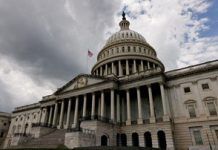Fire-brigade bosses in the UK have raised concerns about the safety performance of modern methods of construction (MMC). In a five-page statement on the issue, the National Fire Chiefs Council (NFCC) set out a litany of issues about the construction industry’s increasing use of MMC in the post-Grenfell era.
It said fire-service managers were particularly concerned about 3D modular volumetric construction and the use of engineered mass timber products, such as cross-laminated timber and glulam, although they raised multiple issues about the use of MMC more widely.
However, the government insisted that its new safety rules would cover all types of construction, including modern methods.
The NFCC called for the introduction of specific safety regulations and legislation relating to MMC, and for it to be specifically addressed in the Building Safety Act. It also demanded more safety testing and research on the fire-safety performance of MMC, stating that firefighters were concerned about the structural stability of tall modular and mass timber construction “where the consequence of structural failure is significant”.
“Any situation where design teams specify their own test standards should not be seen as acceptable in any competent building-standards process,” the document said. Elsewhere in the statement, the NFCC questioned whether the safety benefits that are often put forward by advocates of offsite buildings can be relied on, while raising doubts about the “competence” of some onsite installers.
It added: “When issues regarding construction-material safety are coupled with concerns around competency and build quality in the construction industry, it does not provide us with sufficient confidence that MMC projects are receiving the appropriate level of scrutiny needed for such new and innovative approaches.
“This is particularly concerning considering the use of MMC in high-rise residential buildings, with increasingly taller schemes coming forward, despite the consequences of failure in such higher-risk buildings being devastating.” The NFCC called on the government to set out competency requirements for practitioners who work on such buildings.
However, a spokesperson for the UK government pointed out that it was setting up a Building Safety Regulator to manage risks on all types of high-rise building in England, and that it was working with timber manufacturers to resolve safety questions related to materials. They added: “We strongly reject these claims – buildings must meet the safety and performance requirements in the building regulations no matter how they’re constructed or what materials are used.
“The Building Safety Act is a ground-breaking reform to give residents more rights, powers and protections so homes across the country are safer. “We remain absolutely committed to increasing the supply of housing, but this cannot be at the expense of safety. We continue to engage with the sector and keep regulations under review.”








